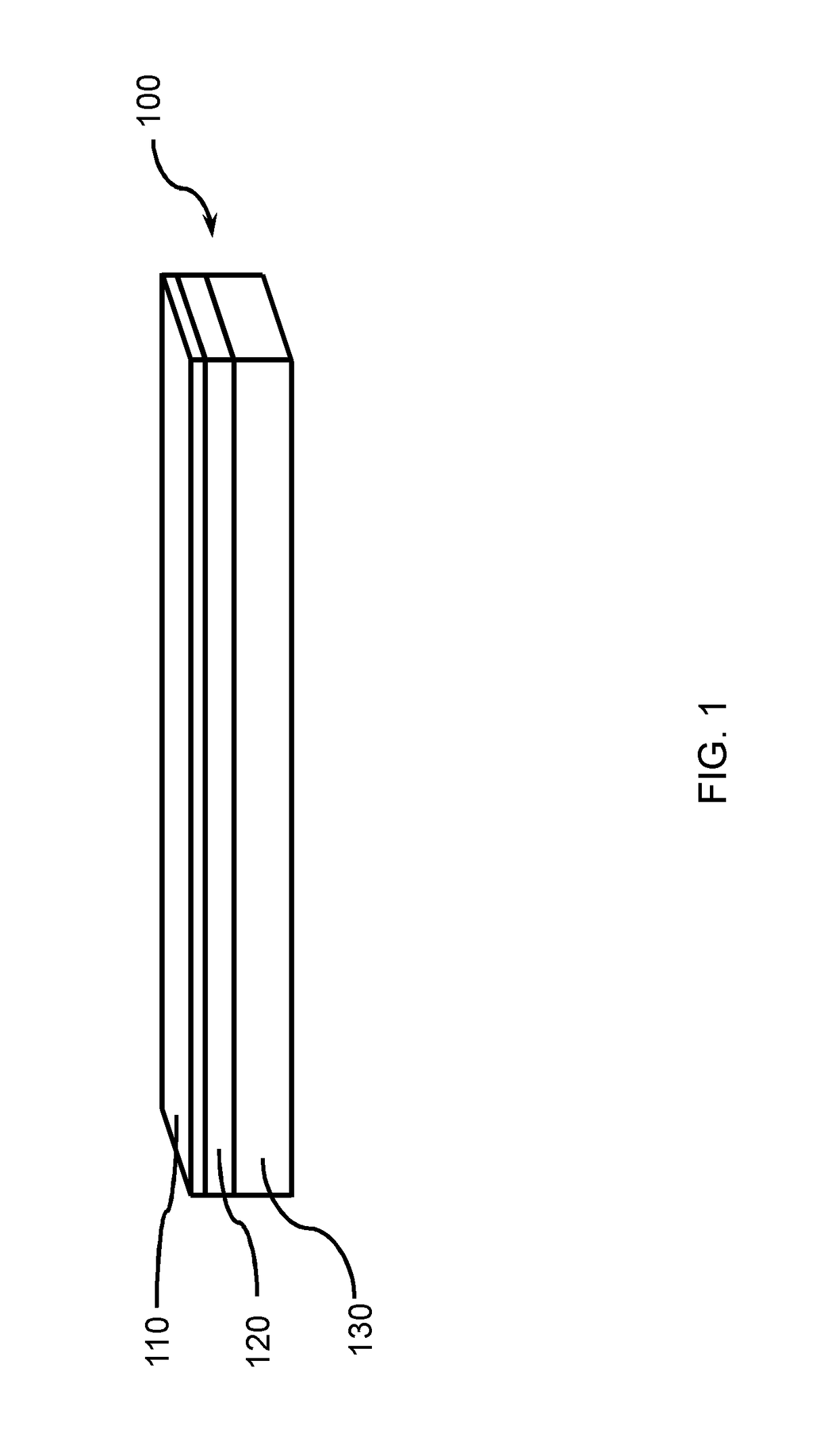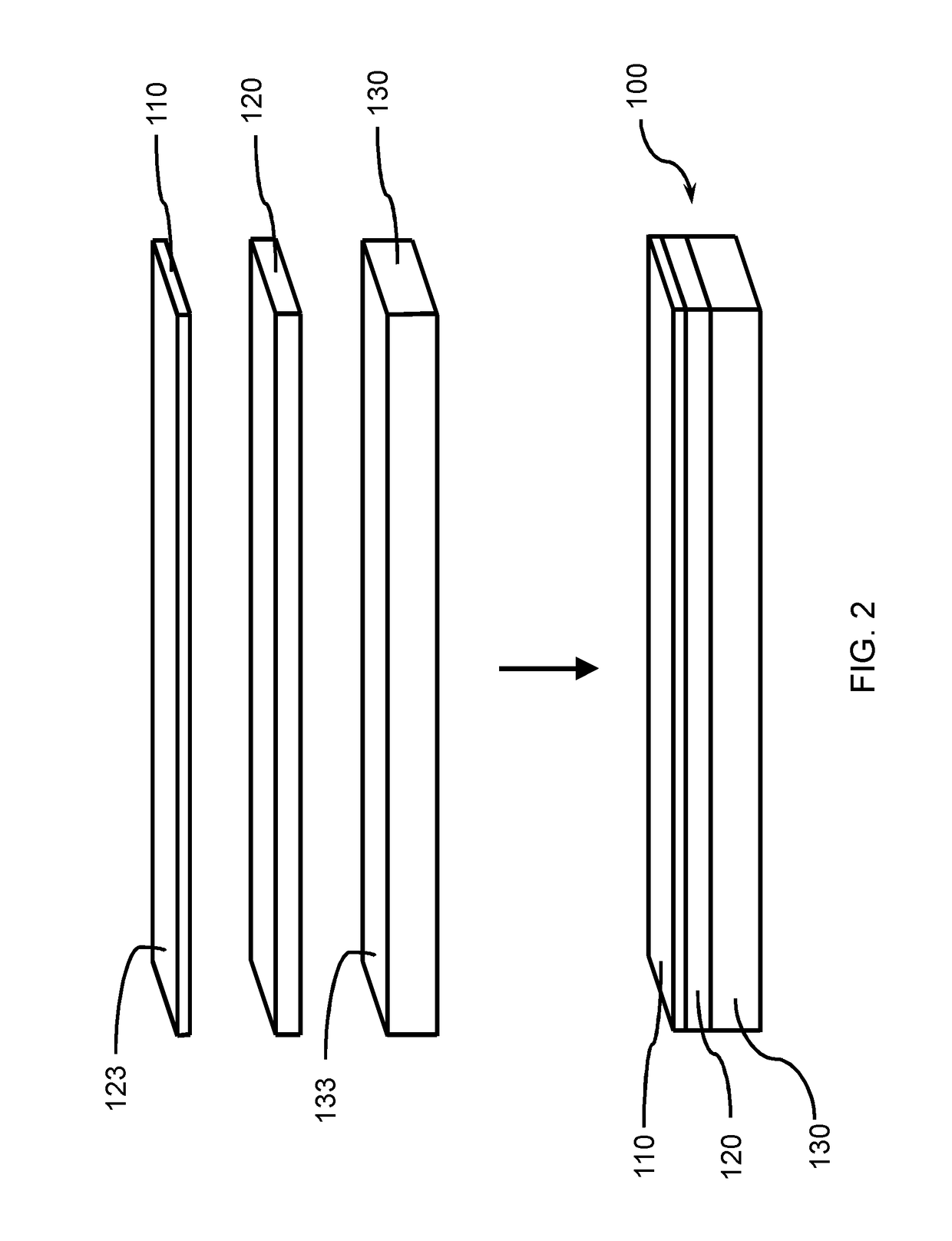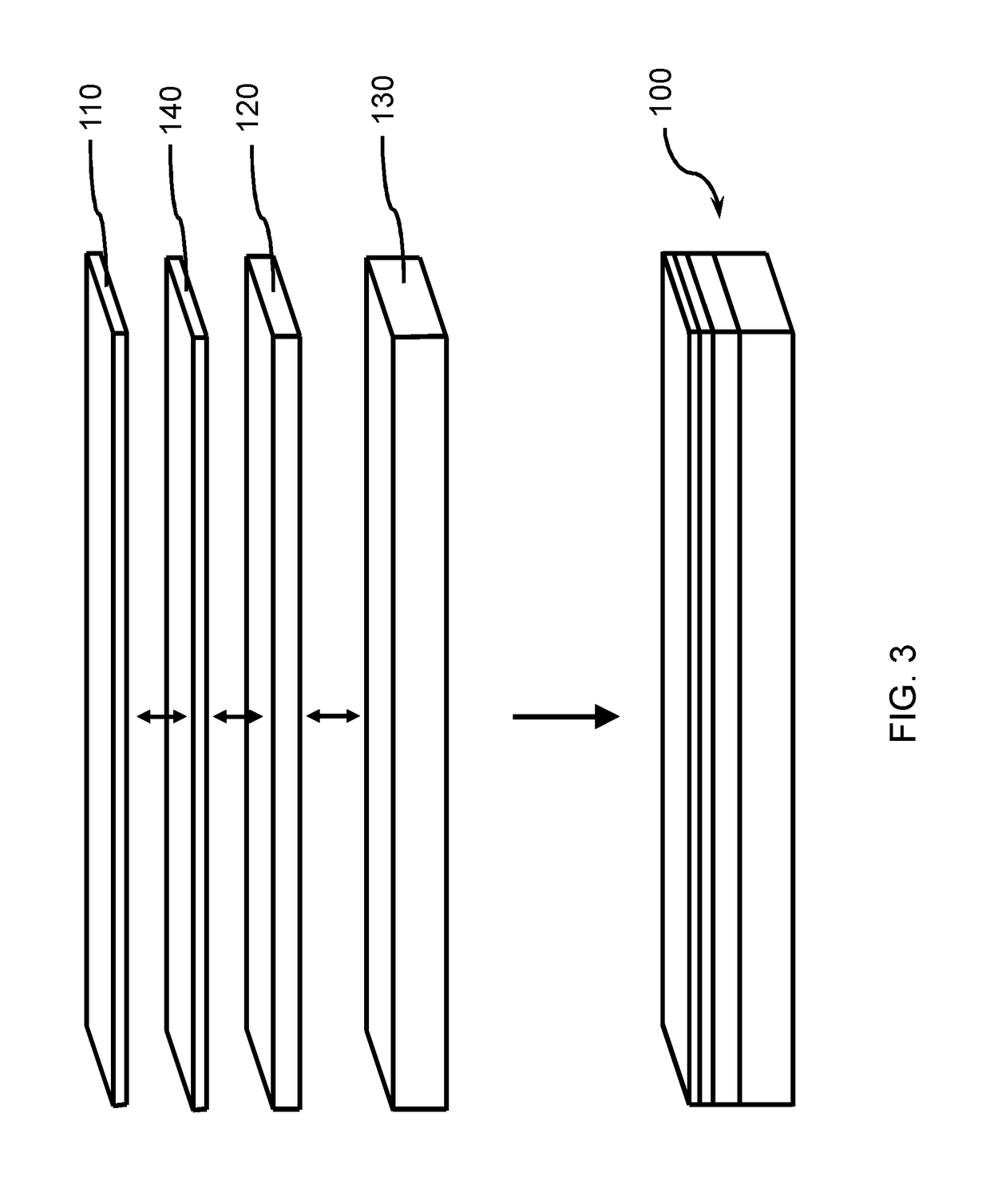Method of laminating ultra-thin glass to non-glass substrates
- Summary
- Abstract
- Description
- Claims
- Application Information
AI Technical Summary
Benefits of technology
Problems solved by technology
Method used
Image
Examples
example 1
[0076]In a non-limiting example of a method of forming a laminate structure, a first glass tray, which is made of chemically strengthened glass, was positioned in a horizontal orientation to provide a first uniform, flat, rigid surface. The first horizontal glass tray was a bottom glass tray having an exposed top surface. A polymer sheet, which was a polytetrafluoroethylene, was positioned upon at least a portion of the bottom glass tray to provide a barrier between the exposed top surface of the bottom glass tray and a surface of a glass substrate or non-glass substrate. A single polymer sheet covered the entire surface of the bottom glass tray, or a single polymer sheet covered only a portion of the bottom glass sheet upon which laminate structures are to be formed, or a plurality of polymer sheets were arrayed over the exposed top surface of the bottom glass tray to provide positions for placement of a plurality of individual laminate structures. A glass substrate or a non-glass ...
example 2
[0078]In another non-limiting example of a method of forming a laminate structure, the stack was bonded together during a bond cycle, and then the interlayer was cured during a cure cycle to achieve defect and warpage free laminate structure.
[0079]In a bond cycle, a stack was assembled and placed within a vacuum bag or vacuum ring, and the gas (e.g., air, nitrogen, argon, etc.) removed from within the vacuum bag or vacuum ring to create an applied pressure equal to atmospheric pressure on at least the major surfaces of the stack. The temperature of the stack, as measured by a sensor, was increased from room temperature to a maximum intended temperature of 120° C. at a rate of about 2.8° C. / min. over approximately 35 minutes, while the vacuum bag or vacuum ring was maintained under a vacuum and a force was applied to the stack. The stack was maintained at a temperature of about 120° C., which is less than the softening temperature of the non-glass structure and a pressure of approxim...
PUM
| Property | Measurement | Unit |
|---|---|---|
| Temperature | aaaaa | aaaaa |
| Thickness | aaaaa | aaaaa |
| Thickness | aaaaa | aaaaa |
Abstract
Description
Claims
Application Information
 Login to View More
Login to View More - R&D
- Intellectual Property
- Life Sciences
- Materials
- Tech Scout
- Unparalleled Data Quality
- Higher Quality Content
- 60% Fewer Hallucinations
Browse by: Latest US Patents, China's latest patents, Technical Efficacy Thesaurus, Application Domain, Technology Topic, Popular Technical Reports.
© 2025 PatSnap. All rights reserved.Legal|Privacy policy|Modern Slavery Act Transparency Statement|Sitemap|About US| Contact US: help@patsnap.com



